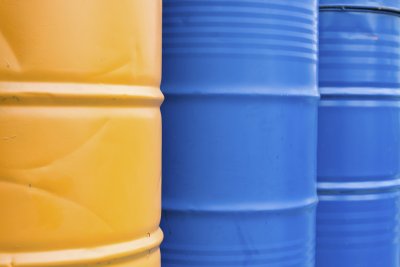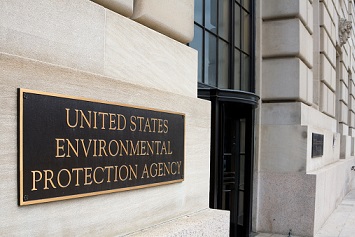State implementation of the federal Resource Conservation and Recovery Act (RCRA) is not happening as Congress intended, according to a July 2018 report by the EPA’s Office of Inspector General (OIG).
As with other environmental statutes, Congress wrote RCRA to be an exercise in federal-state cooperation. The statute listed areas of concern, provided major goals, and directed the EPA to write rules to achieve those goals. States then had the option to adopt and enforce the federal rules with EPA oversight and, of course, with federal funding defraying some of the programmatic costs. The OIG notes that between 1980 and 2015, the EPA has done its job by promulgating 335 federal rules (some required, others not) to implement RCRA’s hazardous waste provisions. The problem is that the states have been inconsistent in adopting these rules and applying to the EPA for federal authorization. Moreover, the EPA itself has a spotty record of granting rule authorization to states seeking it. The result is that, from state to state, there is a wide discrepancy in RCRA rule authorizations.
“States and the EPA have taken many years to authorize rules—from less than 1 year to more than 31 years,” says the OIG. “No state has been authorized by the EPA for all required rules. For the 173 required rules, the number of rules not authorized ranges from 6 to 98 per state; eight states have not been authorized for more than 50 rules.”
In some cases, the EPA must implement and enforce rules in states with rule authorization. But that may not be the case in states with an authorized base program—that is, authority to implement non-HSWA rules, or rules promulgated before passage of the 1984 Hazardous and Solid Waste Amendments (HSWA) to RCRA. Under the 1976 statute, the EPA may not enforce non-HSWA rules until states with base program authorization have been authorized for those rules. In the HSWA, Congress tried to correct this roadblock by removing the precondition that the EPA may enforce a new rule only if a state has been authorized for that rule.
Still, Congress intended that the states conduct the great majority of RCRA implementation and enforcement, and the lack of state authorizations means the goals of RCRA are not being met, says the OIG. Absence of state authorization has resulted in “regulatory gaps” that “create risks to human health and the environment,” the OIG states. Moreover, the OIG believes the EPA does not have a clear picture of where state applications for rule authorizations stand and why decisions on these applications have not been made. The EPA’s Office of Land and Emergency Management (OLEM), which implements RCRA and the HSWA, had reservations about some of the OIG’s observations and findings, but basically agreed to recommendations the OIG made to improve the RCRA rule authorization process.
Regulatory Gaps
The OIG’s report is something of a surprise. In contrast to their legally unsettled cousins, the Clean Air Act (CAA) and the Clean Water Act (CWA), RCRA and the HSWA are relatively stable federal laws inciting few major controversies (one recent exception is the battle over the EPA’s rule and amendments covering coal combustion residuals). In a response to the report, Barry Breen, the OLEM’s acting assistant administrator, suggested that the OIG may have exaggerated the significance of the “regulatory gaps.”
“The OLEM believes that the report should discuss in greater detail that in many cases even though a state has not been authorized for a federal hazardous waste rule, the state has nonetheless adopted the rule,” wrote Breen. “States have adopted 40 percent of the universe of rules for which they are not authorized. In this situation the state has full regulatory authority for implementation and enforcement. Further, in these instances, it is likely that EPA has already reviewed the state rules. Therefore, the state would have incorporated EPA comments that ensure that rules are at least as stringent as the federal rules.”
RCRA’s Base Program and the HSWA
RCRA comprises both the original 1976 act and the 1984 HSWA. The base program contained in the original law created the protective cradle-to-grave hazardous waste structure; established a permitting and tracking system; developed design performance standards for transfer, storage, and disposal facilities; and initiated state program authorization. The HSWA built on this foundation with the land disposal restrictions program, corrective action requirements, permitting deadlines for hazardous waste facilities, and a requirement to examine the condition of solid waste landfills.
Under the 1976 law, states and territories may assume primary responsibility for implementing the base hazardous waste program, with oversight from the federal government. For a state to assume this responsibility, it must obtain authorization from the EPA. To receive authorization, RCRA requires that a state program be at least equivalent to and consistent with the federal program. A state or territory that has received final authorization from the EPA for the base program can then implement and enforce RCRA’s hazardous waste rules; authorized state rules act in lieu of federal rules. All 50 states and territories have been granted authority to implement the base program.
For non-HSWA rules, a new EPA rule does not go into effect until a state adopts it, and it cannot be enforced by the EPA in that state until the EPA authorizes the rule for that state. Congress corrected course with the HSWA by making all HSWA rules immediately effective in all states, giving the EPA full implementation and enforcement powers while also giving states the option to adopt HSWA rules and apply for authorization.

Adoption and Authorization
As noted in Breen’s letter, a state may adopt, implement, and enforce a federal hazardous waste rule even before it has been authorized to do so by the EPA. If the state applies to the EPA for rule authorization, the EPA must determine if the state meets the statutory criteria for authorization; essentially this means that the EPA must determine that the rule that state has adopted is at least equivalent to the federal rule and that the state has the authority and capabilities to enforce it. As noted, Breen and the OLEM suggest that adoption without authorization does not leave the regulatory gaps the OIG is concerned about, but the OIG is not convinced.
“While states may have adopted rules, it is not clear that the adopted rules meet the authorization criteria without formal approval by the EPA,” states the OIG. “We have no basis for determining if the adopted rules are equivalent to the authorized rule without extensive analysis.”
Breen and the OLEM are also concerned that the OIG may have missed the point by looking uniformly at all rules.
“The report fails to define the scope and significance of the cited regulatory gaps,” wrote Breen. “Rules vary in their significance and impact, and, by essentially treating all the rules as though they have the same reach and importance, the OIG report, in some cases, does not accurately gauge the impact of the cited regulatory gaps. For example, most of the unauthorized non-HSWA rules are minor in nature and many are less stringent. We also note that in many instances, where a state has not been authorized for a HSWA rule, states are conducting some implementation activities, lessening the impact on EPA resources.”
The OIG also found that the process of authorization varies enormously. “Authorization of new hazardous waste rules can take less than 1 year to more than 31 years,” states the OIG, which found that the average time for state rules to be authorized by the EPA is 7.7 years.
The long delays are not caused entirely by the EPA seeing as states are not required to seek authorization and may take their time in doing so. States may delay seeking authorization for specific rules for any number of reasons, including the absence in a state of industrial facilities that would be subject to a federal rule, lack of professional staff to assemble an authorization package, reluctance to pursue authorization for a rule that is being challenged in court, and deciding that the work of seeking authorization is unnecessary because equivalent rules are already in force. Two states—Iowa and Alaska—do not have RCRA authorization because they have not applied for it.
In addition, RCRA includes no requirement that the EPA must approve or otherwise respond to a state application within a specific period of time.
Gaps in Tracking Also
The OIG’s concerns appear equally divided between the lack of state authorizations of EPA rules and the EPA’s slow approach to reducing the backlog of authorizations.
“EPA oversight did not result in timely state authorization of all required new hazardous waste rules,” writes the OIG. “The EPA lacked internal controls to validate the completeness and accuracy of state authorization information and did not collect sufficient data to identify reasons for delays or lack of authorization of RCRA rules. Further, the EPA has not defined authorization goals to track program performance.”
The OIG adds that a better understanding of and solutions to the slow pace of authorization necessitate better tracking. But the OIG found that the Agency does not track the reasons for delays in state authorization in its authorization database.
“The current database does not readily identify where in the authorization process delays are occurring,” wrote the OIG. “Data are incomplete for when states have adopted new RCRA rules and submitted packages to the EPA regions for approval. Further, the Agency has not implemented controls to verify the accuracy and completeness, and therefore the quality, of information collected in the database. As a result, the EPA has insufficient data to determine whether the lengthy amount of time is occurring during the state modification of its program or during EPA review and approval of the program revision.”
Recommendations
While not in full agreement with how the OIG views the Agency’s current approach to RCRA state authorizations, the EPA has agreed to undertake four recommendations the OIG has made. The OLEM will:
- Work with EPA regions to identify and track rules for which states have not sought authorization under RCRA’s Subtitle C hazardous waste program and identify the reason authorization has not been pursued by the state, and then prioritize rules for authorization by the states. Planned completion date: March 31, 2019.
- Develop and implement a plan to collect the necessary data on state authorizations to identify the cause of delays and make informed decisions on how to improve the process. Planned completion date: March 31, 2019.
- Improve data quality for state authorizations under RCRA’s Subtitle C hazardous waste program by implementing internal controls to verify the accuracy and completeness of the data. Planned completion date: March 31, 2019.
- Develop and implement state authorization performance measures for RCRA’s Subtitle C hazardous waste program to track annual progress. Planned completion date: September 30, 2019.
Breen says that the Agency’s Office of Resource Conservation and Recovery is now involved in a “broad array” of state authorization program performance improvement efforts, including implementation of Lean management.
“As such, this report and its recommendations will fit in well with our ongoing efforts to improve the RCRA state authorization process,” wrote Breen.
The OIG’s report is available here.


